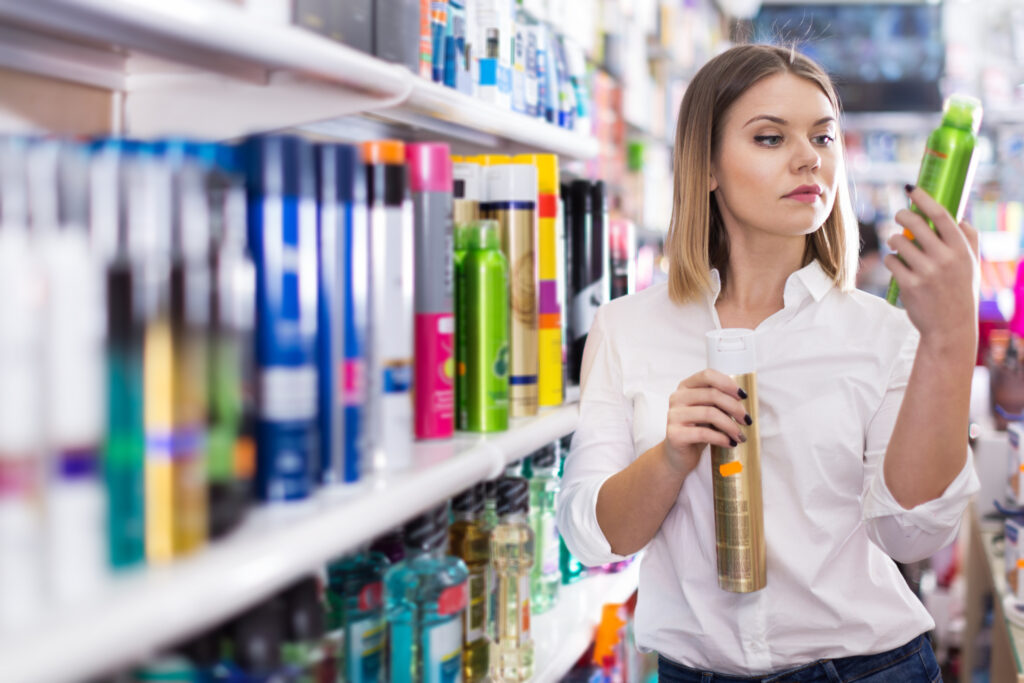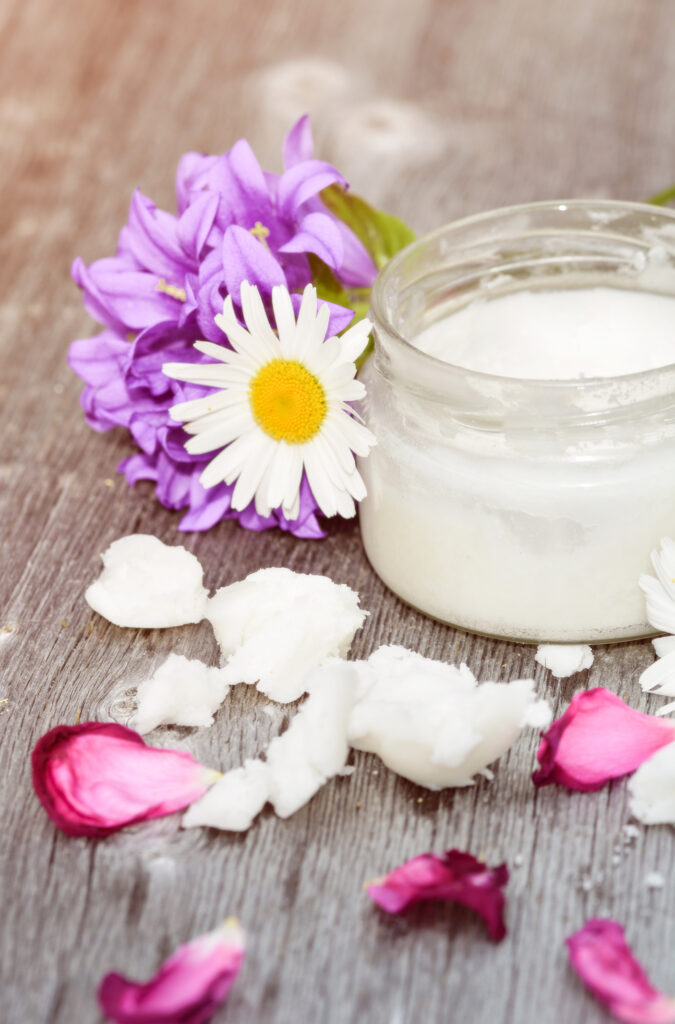As women, we all want to look and feel our best. In fact, we go to great measures and big dollars to look good in our own skin. According to a report by Statista, the global cosmetic market was valued at around 532 billion U.S. dollars in 2019. This includes various personal care products such as skincare, haircare, cosmetics, fragrances, and toiletries. Developed countries, including the United States, Japan, Germany, France, and the United Kingdom, contribute significantly to this market. In 2020, in the U.S. alone, personal care product sales reached approximately 97 billion U.S. dollars.

We are bombarded with glamorous advertising about all of these products. However, beneath their appealing packaging and promises of beauty lies a concealed danger: xenoestrogens. As I have written previously, “xeno” means foreign. These harmful foreign toxic estrogens, also known as “environmental estrogens” or “endocrine disruptors,” can disrupt our delicate hormonal balance and pose potential risks to our health. Like compound interest works at the bank, building slowly over time, these chemicals add up, in a cumulative effect, over time. Experts state that we are exposed to over 160 chemicals each and every day! Let’s take a look at these chemicals or xenoestrogens, explore their sources, and illuminate ways to reduce your exposure.
First, let me tell you a real story.
When I first moved to Atlanta, Georgia, in 2000, I set out to find an organic beauty salon. While I had been using a “botanical” brand of hair care products for a long time, I was seeing the research about xenoestrogens and hormonal imbalance in the literature and wanted to make a safer choice for myself. I found EcoColors, owned and run by stylist Lisa Saul. I will never forget her sharing with me about a fellow stylist that came to see her, with skin cancer, on the palms of both hands!! Yes, on the palms of both hands, from rubbing toxic hair care products into her palms before applying them to her client’s hair. Ah, that caught my attention! I began that day to clean up my personal care products with more dedication. Now, with that in the background, let’s dive into xenoestrogens.
Unraveling & Identifying Xenoestrogens
Xenoestrogens are synthetic or naturally occurring compounds that mimic the effects of estrogen in our bodies. They have the ability to bind to estrogen receptors, leading to disruption in our hormonal balance and interfering with the normal functioning of our endocrine system.
Below are some of the most common nefarious chemicals to eliminate from your personal care products.
a. Parabens: These widely used preservatives (e.g., methylparaben, propylparaben) have been identified in numerous personal care items. Parabens are antimicrobials used to increase the shelf life of products. Unfortunately, while they may prevent the growth of mold, they mimic estrogen and will block estrogen receptor sites and not only cause hormonal imbalance symptoms but also increase your risk for hormone-related cancers. In fact, a study published in the Journal of Applied Toxicology (2004) found parabens in breast tumor samples, indicating a possible link to breast cancer. Another study published in the Journal of Steroid Biochemistry and Molecular Biology (2017) found Parabens in breast cancer samples.
b. Phthalates: Frequently utilized in fragrances, phthalates help extend the longevity of scents. I rarely go shopping at all, not to mention a mall and walk past a cosmetic fragrance department. Because if I do, I get assaulted with toxic odors and get a headache quite easily. In some ways, that’s a gift. My body has told me for years to stay away from these fragrances. These chemicals have also been associated with endocrine disruption, reproductive system abnormalities, and other health concerns. A study published in the International Journal of Andrology (2016) reported a correlation between phthalate exposure and negative effects on male reproductive health, including reduced sperm quality.
So, ladies, these toxic ingredients aren’t just in our products; they are in men’s colognes, shaving creams, and deodorants too.
c. Sodium Lauryl Sulfate (SLS) and Sodium Laureth Sulfate (SLES): These surfactants are commonly found in shampoos, body washes, and toothpaste due to their foaming properties. SLS and SLES have been linked to skin irritation and potential hormone disruption. Research published in the Journal of Investigative Dermatology (2015) indicated that SLS can damage the skin barrier function and cause skin irritation in some individuals.
d. Triclosan: An antimicrobial agent often added to antibacterial soaps, hand wipes, and toothpaste. Remember COVID? (not that we can forget;) The whole world seemed to be bathed in Triclosan. There were antibacterial hand stations all over! Every airline handed out wipes so we could wipe down our individual seats and trays. Did you realize you were increasing your toxic burden by trying to avoid another one? Triclosan can interfere with the endocrine system and contribute to antibiotic resistance. According to a study published in Environmental Science and Technology (2008), triclosan was detected in the urine of 75% of the participants tested. I can only imagine the numbers now, after the widespread COVID distribution.
Health Concerns and Potential Risks
Exposure to xenoestrogens in personal care products has raised concerns about potential health risks. Here are some key areas of concern:
a. Hormonal Imbalances and Reproductive Issues: Xenoestrogens can disrupt the delicate balance of hormones in our bodies, leading to irregular menstrual cycles, decreased fertility, and other reproductive issues. A study published in Environmental Health Perspectives (2003) suggested that exposure to xenoestrogens may contribute to menstrual cycle irregularities and infertility in women.
b. Increased Cancer Risk: There is growing evidence suggesting a link between xenoestrogens and an increased risk of certain cancers, such as breast and prostate cancer. A review published in Environmental Health Perspectives (2012) found evidence of an association between paraben exposure and breast cancer development. However, further research is needed to establish definitive conclusions and understand the exact mechanisms involved. Even antiperspirants and deodorants are loaded with these toxins and can increase your risk of breast cancer.
c. Developmental Disorders: Prenatal exposure to xenoestrogens has been associated with developmental disorders in children, including altered cognitive function and behavioral problems. A study published in Environmental Health Perspectives (2010) found that prenatal exposure to phthalates was associated with adverse neurodevelopmental outcomes in children.
d. Skin Sensitization and Irritation: Certain xenoestrogens, such as phthalates and SLS, can cause skin irritation and allergic reactions, particularly in individuals with sensitive skin. A study published in Contact Dermatitis (2016) reported a significant association between exposure to certain phthalates and an increased risk of allergic contact dermatitis.
Making Informed Choices

To minimize exposure to xenoestrogens in personal care products, it is essential to make informed choices. Consider the following tips:
a. Read Labels: Thoroughly read product labels and look for potential xenoestrogen sources such as parabens, phthalates, SLS, SLES, and triclosan. Opt for products labeled “paraben-free,” “phthalate-free,” or “sulfate-free.”. I recommend the site SkinDeep.org, by the Environmental Working Group, to all of my clients to help them understand the ingredient in their products. You can use a simple QR code to scan all of your products and get the real facts.
b. Choose Natural and Organic Alternatives: Look for personal care products that are made with natural and organic ingredients. These products are often free from harmful synthetic compounds, reducing your exposure to xenoestrogens. Again, SkinDeep.org is an amazing resource. Some of my current favorite personal care products that I use were discovered from this resource.
c. Research Brands: Take the time to research brands and companies that prioritize transparency and safety. Look for certifications or seals indicating that the products have undergone rigorous testing and meet certain standards. Most consumers think the FDA is protecting us. Unfortunately, that is NOT the case. There are hundreds of chemicals banned in Europe that are allowed in the United States. In the 30-year history of the FDA, they have only banned nine ingredients! The cosmetic industry is regulated by a board, and words like “natural”, “organic” & “Hypoallergenic” are used with little oversight. In fact, some products listed as “organic” have been found to only have 10% organic ingredients – the rest are toxic petrochemicals.
d. Simplify Your Routine: Consider simplifying your personal care routine and minimizing the number of products you use. For instance, organic coconut oil is a magical product with natural anti-microbial properties. I use it all over my body each day instead of harmful lotions and creams. It’s a fabulous lubricant, too ladies. I use essential oils instead of toxic fragrances and can smell refreshed and feel invigorated from them too. By reducing the variety of products you expose yourself to, you can limit your exposure to potential xenoestrogens.
e. DIY Solutions: Explore do-it-yourself (DIY) alternatives for personal care products. You can create your own natural and toxin-free products using simple ingredients like coconut oil, shea butter, and essential oils. There are numerous recipes online to create yummy blends.
f. Educate Yourself: Stay informed about the latest research and news regarding xenoestrogens and personal care products. Subscribe to the EWG.org newsletter and perhaps even support their research. Their knowledge will empower you to make educated choices and advocate for safer products.
Remember Compound Interest
Xenoestrogens in personal care products pose a significant concern for our health and well-being. Every single choice, every single day, adds up – for good or bad. Your daily choices will determine if you are going to be bombarded with the nasty symptoms of Estrogen Dominance or not. Your daily choices will dictate if your hormones are metabolizing down the healthy pathways or cancer-causing pathways.
What’s your body telling you?
I’m sure you’ve heard of the adage, “If you don’t measure it, you can’t master it.” Well, that goes with our health too. There are ways to measure and monitor your toxic load of xenoestrogens. The first is with my new Estrogen Dominance Quiz. Click here to answer 14 simple questions. You will immediately receive a score, followed by an in-depth email to help you overcome the symptoms and even illuminate these toxins from your body.
The DUTCH test, highlighted in this blog post, is another favorite and informative tool for you to understand what is going on in your body. See my discount code LDF to get $100 off.
Please, take the time to get informed, understand the warning messages you’re your body is telling you, and make healthy choices! You are worth it!! You DO NOT have to be a victim to these toxins when you understand them and know how to avoid them.
Here’s to your healthy hormones!

